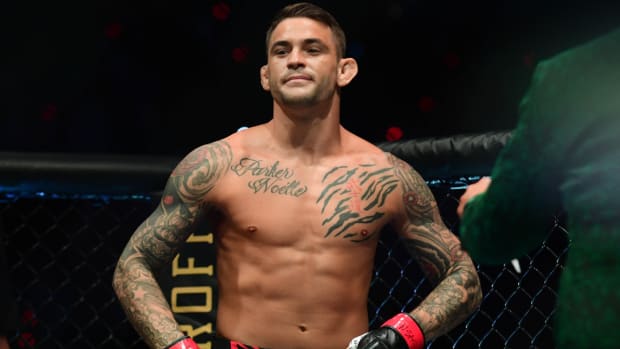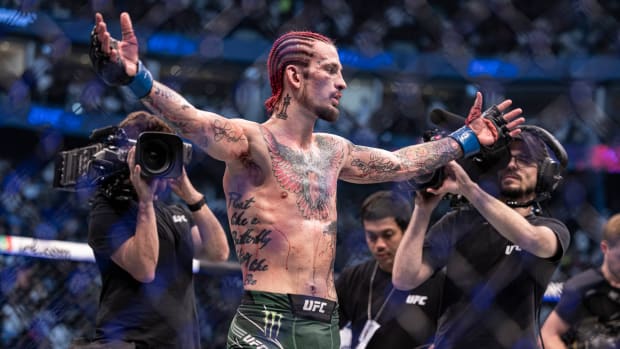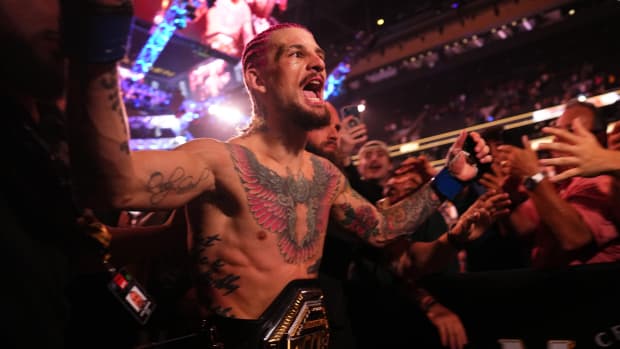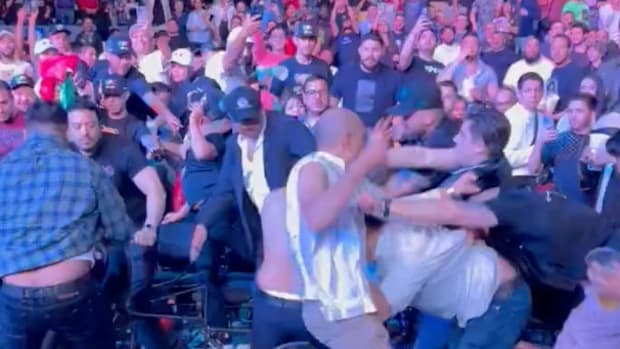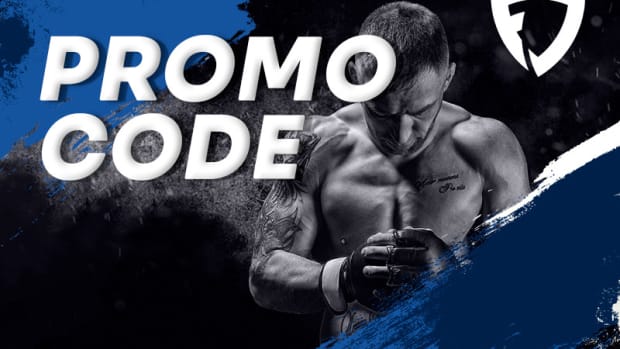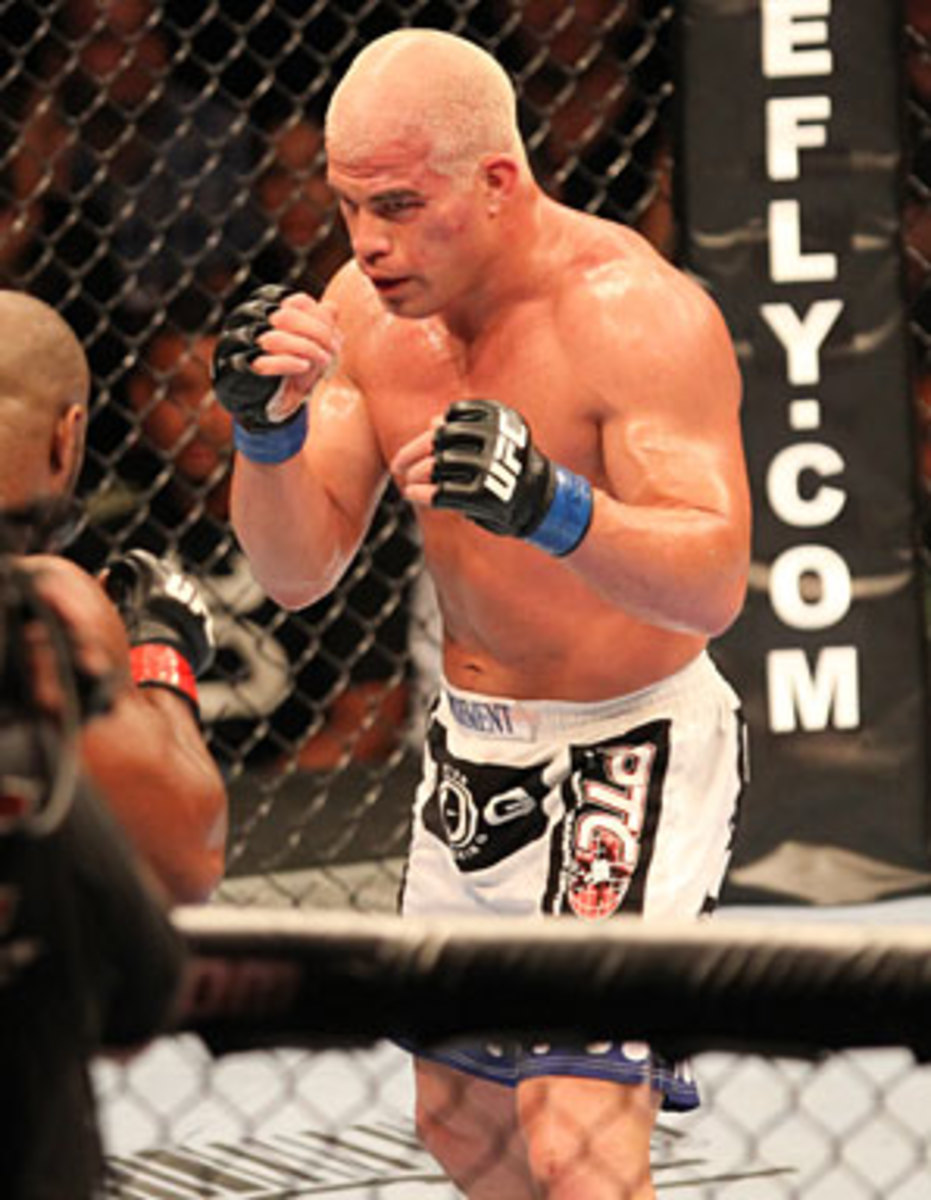
Tito Ortiz still hustling, polarizing as UFC 140 co-feature bout looms
It's this polarizing popularity, which Ortiz carefully began cultivating himself when he first entered the octagon nearly 15 years ago, that has kept him at the top end of every UFC card he's appeared on since his debut.
On Saturday, Ortiz, who's lost three of his four bouts since re-signing with the promotion in mid-2009 (and four of five overall), will co-headline in a light heavyweight bout against Antonio Rogerio Nogueira at UFC 140 in Toronto.
There's no doubt a good number of Toronto-based fans have purchased their tickets just to finally see the 36-year-old Ortiz -- who will inch past Matt Hughes with the most UFC appearances ever (26) Saturday -- compete in person. This type of continuous devotion is a rare commodity in the sport, but Ortiz's passion for putting on a show for the fans has never really waned.
Still, others will come out Saturday to root against him, unaware or having long forgotten how vital Ortiz (16-9-1) has been to both the promotion and the sport's growth over the last decade. Whichever side of the fence spectators do fall on, it's guaranteed that Ortiz will get one of the biggest reactions as he enters the 16,000-seat Air Canada Centre. Ortiz has made sure it will always be this way.
Ortiz didn't become one of the most popular UFC champions in MMA history by accident. A former collegiate wrestler, Ortiz in his prime said he regularly trained up to eight hours a day to outlast any opponent he faced in the octagon.
A fan of pro wrestling as a kid, Ortiz played up his cockiness in his early UFC fights against the Lion's Den fighters. In his short time as a training partner to UFC star David "Tank" Abbott, Ortiz had learned the value of a strong persona, which could keep a fighter in the spotlight whether he won or lost. However, his determination to connect with every single fan he met outside the cage is what truly propelled Ortiz to legendary status.
When the UFC's ownership changed hands in early 2001, Ortiz, who became the light heavyweight champion in April 2000, was the most popular fighter in the promotion with good reason.
Ortiz was the first UFC fighter to treat himself as a brand. Years before Topps came calling, Ortiz designed and printed up his own trading card and passed hundreds of them out at shows. When he grew tired of making the rounds for $100 sponsorships, Ortiz started his own clothing line, Punishment Athletics, and wore that into the cage.
At UFC 33 in Las Vegas, Ortiz signed autographs outside the arena only a few hours before he defended his title against Vladimir Matyushenko. Before UFC events he wasn't scheduled to fight at, Ortiz could be found in the host hotel's lobby, selling Punishment T-shirts out of a cardboard box.
"I remember placing signed 8-by-10s in every seat myself when the UFC went to London in 2002. Nobody understood it. Some still don't understand it," Ortiz said. "I hear fighters complain about having to do two- and three-hour signings now. I've signed for seven hours at the [UFC] Expos when the line is there. They should be grateful when the fans take an interest in them."
Ortiz's dedication to his fans has been reciprocated throughout his career and helped UFC owner Zuffa overcome some sizable hurdles on its way to becoming a profitable company. In 2002, Ortiz and Ken Shamrock headlined the first UFC pay-per-view under Zuffa ownership to break 100,000 buys. Four years later, Ortiz and Chuck Liddell netted one million buys for their rematch at UFC 66.
Ortiz has remained such a proven product over time that when he held out from re-signing with Zuffa amidst a messy, public squabble with UFC president Dana White in 2009, the company came to a six-fight deal with the fighter in the 11th hour to make sure no other competitor snatched him up.
The sport's rigors haven't been as kind to Ortiz's body. Since his four fights in 2006, Ortiz has fought just once a year from 2007 to 2010. And though he underwent back fusion surgery in October 2009 and neck fusion in March 2010 to stay in the game, Ortiz is no longer the competitor he once was.
Upon his return to the UFC in 2009 and interspersed between his two major surgeries, Ortiz dropped decisions to younger opponents in Forrest Griffin and Matt Hamill, whom he'd coached during season three of The Ultimate Fighter a few years prior.
When the UFC matched Ortiz against top-10 prospect Ryan Bader at UFC 132 last July, many didn't give the elder fighter much of a chance. For the first time, there was also a vocal fan contingent asking for his UFC release if he lost.
"I really recognized that all the way right up to the Bader fight," Ortiz said. "I started changing my attitude and tried to tune all of those negative people out. I started to focus on the positive people around me and the people that believe in me, those people that want me be the champ."
Ortiz said he also shed his classic nickname, "The Huntington Beach Bad Boy," for a new one: "The People's Champion."
As expected, Bader, a two-time All-American wrestler for Arizona State University, was able to take Ortiz down, but the veteran was waiting for him with a guillotine choke that ended the bout at one minute and 56 seconds. It was Ortiz's first victory in almost five years. He was ecstatic, but the fans seemed overjoyed. Longtime fans were reminded of Ortiz's ability to evoke emotion through his fighting, and maybe some new admirers experienced it for the first time.
Ortiz was suddenly popular again.
"It felt amazing," Ortiz said. "I wasn't focusing too much on the people that jumped on the bandwagon. I was just happy to have the people that had my back no matter what. I wasn't there to prove anyone wrong. I was out to prove to the people that believed in me that they were right."
Training for Nogueira, a boxer by preference, Ortiz has had to hone in on the area that has always given him trouble: his own striking.
"In his past fights, he would stiffen up on the punches, almost like he was overreacting to the punches before they came," said Ortiz's head coach Jason Parillo, a former pro boxer who retired with an 8-0 record. "That stiffness wouldn't allow him the footing to recoil and fire back."
Parillo said Ortiz's lingering back and neck issues have finally started to diminish during camp and the fighter has had enough consecutive training time to soak up some new technique.
"I think it had to do with his confidence in getting more control over his own punches," Parillo said. "His accuracy and precision time has greatly improved. If he can control his punches, he won't be off-balance when he goes for the shot. We're essentially improving his hands to get him to his strong suit.
Fabricio Werdum, a Brazilian jiu-jitsu world champion many times over and the first fighter to ever submit heavyweight legend Fedor Emelianenko in more than 30 fights, has worked with Ortiz for the last month.
It's been Werdum's ability to mimic Nogueira on his feet, Parillo said, which has proven the most useful during Ortiz's camp.
"I think Tito is looking different," said Werdum, a UFC and Strikeforce veteran. "I think he's mentally stronger now, and actually physically stronger, too. He knows he can't go crazy; he has to slow down, look around, and find his opportunities. If he follows his instructions, he has a big chance of winning Saturday."
Ortiz did the promotion a favor and took another fight on 10 days' notice in August, rematching Rashad Evans, who he'd drawn with at UFC 73 in July 2007. Evans finished Ortiz with strikes in the second round, but it can be argued that the late notice was a factor. After Nogueira, Ortiz would still have one more fight left on his contract, though he understands he's not in line for a title shot at this point.
"Just let me fight a top guy so I can compete against him, someone like Forrest [Griffin] or Rich Franklin -- someone with a big name," Ortiz said. "That's what I deserve and those guys deserve, too."
Making the media rounds this week, Ortiz has been growing more accustomed to answering questions about his pending retirement.
Ortiz reasons that he hasn't been seriously hurt in his last few fights and hasn't been dominated too significantly, but there's a slight undertone of doubt in his voice.
"There's a time and place for me to say it's time to hang the gloves up and it may be soon. It may be a couple more fights," Ortiz said. "You never know, though. Dana and [majority owner] Lorenzo [Fertitta] might throw a number at me that might make it where I have to come back. Whatever happens next, I would love to go out on my own terms when I do."
In an age before Twitter, Facebook and Zuffa's tremendous marketing machine, Ortiz was the octagon's original hustler. He knew how to deliver for his fans and he'll do it again on Saturday, win or lose.
